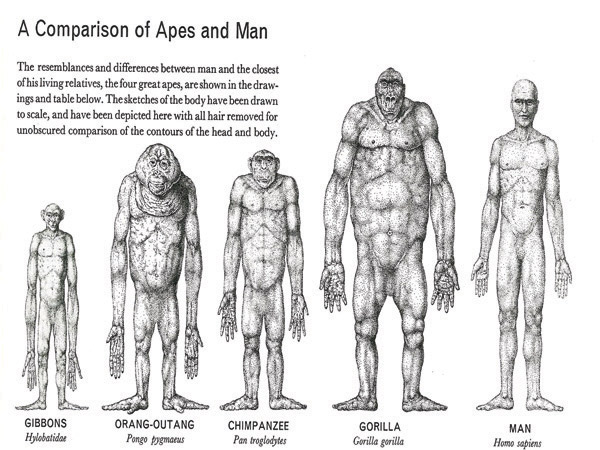Modern humans evolved from a lineage of upright-walking apes that has been traced back over 6 million years to Sahelanthropus. The first known stone tools were made about 2.5 million years ago, apparently by Australopithecus garhi, and were found near animal bones that bear scratches made by these tools.
The earliest hominines had chimp-sized brains, but there has been a fourfold increase in the last 3 million years, a statistical analysis suggests that hominine brain sizes depend almost completely on the date of the fossils, while the species to which they are assigned has only slight influence.
There is a long-running debate about whether modern humans evolved all over the world simultaneously from existing advanced hominines or are descendants of a single small population in Africa, which then migrated all over the world less than 200,000 years ago and replaced previous hominine species.
There is also debate about whether anatomically modern humans had an intellectual, cultural and technological “Great Leap Forward” under 100,000 years ago and, if so, whether this was due to neurological changes that are not visible in fossils.
One of the earliest defining human traits, bipedalism — the ability to walk on two legs — evolved over 4 million years ago. Other important human characteristics — such as a large and complex brain, the ability to make and use tools, and the capacity for language — developed more recently. Many advanced traits — including complex symbolic expression, art, and elaborate cultural diversity — emerged mainly during the past 100,000 years.
